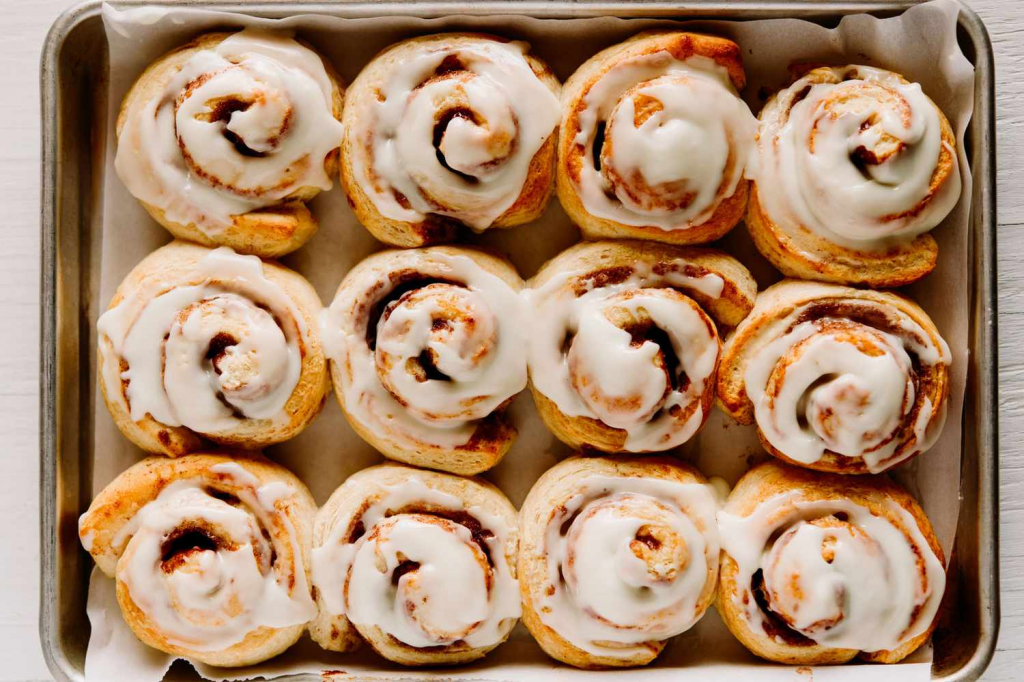By: Mason Rosado ’23

-Photo credit: Spanish Sabores (website/blog)
The sun had barely peaked over the horizon before the boy was in line. Even at this hour, he loosely estimated thirty bodies ahead of him and more coming to stand behind him every minute. He could not see the sunrise, for the buildings lining the market covered the horizon. Looking up, he saw the trace of a few bright stars valiantly pressing themselves through the violet sky. His gaze fell down to the back of the head in front of him and a tired, thoughtless trance overtook him. He waited and waited; eyes as blank and unmoving as the line he was in. The morning wind pushed his bushy hair to the side and ran through his t-shirt. He blinked and shuffled his feet in their sandals, arousing his first coherent thought of the day: at least it will be dry today.
As the sky faded into its usual azure, the line started to move. Slowly, the boy shuffled his way to the front. “Siguiente!”
He looked side to side as the market filled; women in loosely fitted shirts with woven baskets hurried from shop to shop and children chased each other through the street. “Siguiente!”
As if charged by the sunrise, the buzz of conversation in the market rose; store owners began to yell out their prices, shoppers cried out in greeting to each other, dogs yapped and whined for scraps. “Siguiente!”
The boy came face to face with a short man with graying hair in a plain white shirt. He had his hands laid out on a bare wooden table.
“Uno”. The boy said.
The man reached down into a cart and pulled out a small, translucent jar containing a dark substance. He set it on the table with an eyebrow raised.
The boy took a bill out of his cargo pants and slapped it on the table, scooping the jar with the same hand and already turning to leave.
“Dos mas, chico”. The man said, unimpressed with the bill.
Stupefied by the price increase, the boy hesitated before turning around to plead. The line behind him groaned angrily.
“No mas”. The boy said, turning his pockets inside out. “Por mi abuela, señor.”
The man sized him up.
“Por favor?” The boy added with an inflection.
The man cocked his chin. “Siguiente!”
The boy wheeled around and started off through the bustling streets. He secured the jar in his shorts and dodged through the crowds of chattering shoppers. Towards the end of the street, he ducked into an alleyway and continued his hurried pace.
Down the narrow alley, sidestepping trash cans and broken furniture, he noisily splashed through the puddles of dirty water left over from the previous week’s rain. Heading away from the coast, his back to the rising sun, the boy zig-zagged through streets and alleyways as if navigating a maze to which he knew the exact path.
Finally, without warning, he ducked his way into a bulkhead entrance of one of the many indistinguishable three-story tenant buildings which lined every street. Reaching the door at the bottom of the steps, he banged loudly on the damp, wooden door. As his feet soaked in the same dirty water he experienced in the alleyways, he breathed heavily, his chest heaving his thin t-shirt up and down. The bags under his eyes willed the door to open. He banged on the door again. Someone from within unlocked the door without opening it. The boy pushed it open and stumbled through the doorway into a dimly lit kitchen.
A cacophony of hushed whispers, clinking pots, and creaky fans greeted him. Two women, one middle-aged, the other significantly younger, flurried around the kitchen. They both shared his tan complexion, dark hair, and green eyes. They talked excitedly in murmurs and whispers, fussing amongst chipped, open cabinets. On the counter next to a dilapidated oven, was a single pan full of sugar. In a bowl next to the pan, there was what looked to be several raw eggs.
The boy made his way through the clutter of clothes on either side of the doorway towards the counter. He took the jar out of his shorts and set it on the counter with no acknowledgment from the women. He then sat on the table in the middle of the room and folded his arms, hunching his back to observe them.
The older woman took the jar, holding it up to the single light hanging over the counter, and eyed it. She then took a spoon and carefully measured two scoops of the liquid, pouring them into the bowl. The younger woman began to whisk the bowl, pouring it into the pan after a few minutes. She opened up the oven where a large deep dish, half filled with water, sat. She carefully placed the pan into the dish and closed the oven.
The older woman left through a side door to an adjacent room while the younger one began to clean up. The boy still waited on the table, his faraway, sleepy trance returning. His eyelids drooped and he faded in and out of a shallow sleep. The closing of cabinets and clinking of cutlery stirred him periodically until a sharp nudge fully aroused him.
He stretched and yawned as the younger woman opened the door to the adjoining room. She carried with her a small plate with what looked like a slice of cake with melted butter on top. The smell in the kitchen was distinctly different, the warm scent of caramel made his mouth water and stomach growl. He quickly followed the woman into the next room.
Same as the entrance and kitchen, the room was full of clutter. Clothes and boxes were strewn about the floor. Framed pictures lined the shelves. In the corner next to a high window, someone lay in a bed. The older woman sat on the chair next to the figure and the younger stood holding the plate looking down at the figure in the bed. The boy stood by the latter and the figure stirred at the scent of the plate.
“Ahh”. Frail hands reached up for the plate. The older woman helped a clearly elderly lady sit up in bed. Rays of sunlight penetrating the blinds on the window reflected off of white hair. The tired lady held the plate up to her nose, breathing as deep as her shallow lungs allowed.
“Ahh.” She sighed again in her raspy voice. She took a spoon and scooped part of the cake-like pastry into her mouth.
“Mm-mm-mmm.” A smile tugged her lined face. Sparkling eyes found the boy. She set the plate in her lap and reached a hand out toward him. The boy knelt closer to her. Her warm hand caressed his face.
“Gracias, hijo”.
The boy smiled back.
Flan Recipe
- 1 can condensed milk
- 1 can evaporated milk
- 2 tablespoons of vanilla
- 4 whole eggs
- 2 egg yolks
- 3 cups sugar (for the caramel)







